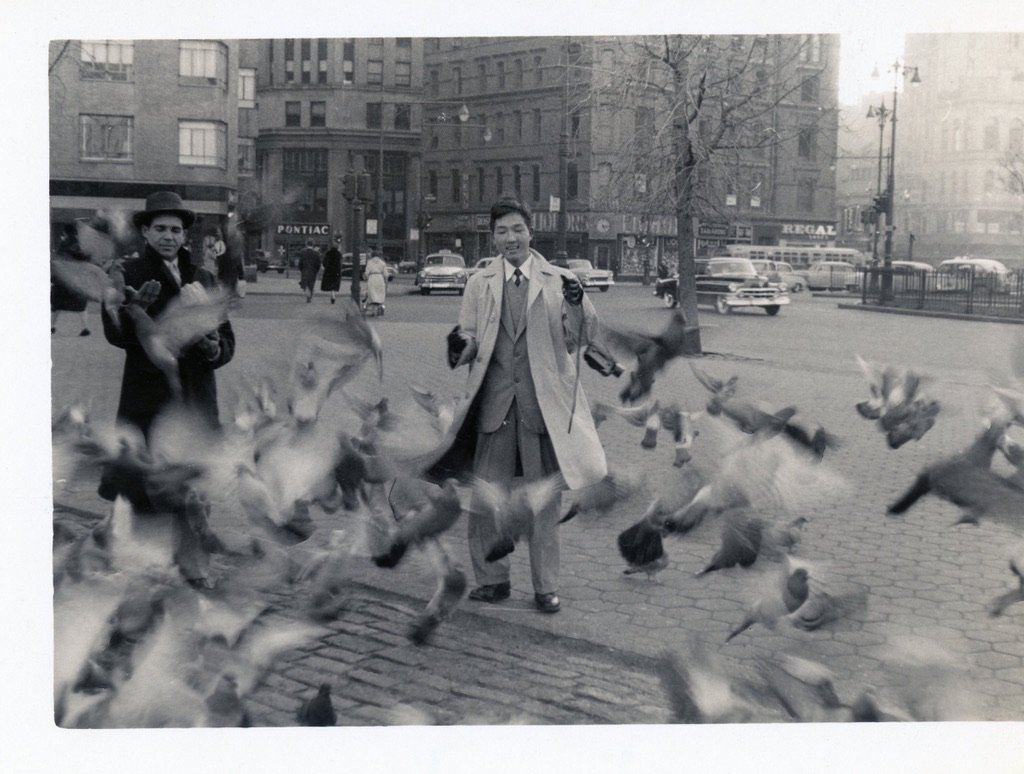bear and the tigeR

My parents got married at a courthouse in Indianapolis, Indiana in 1966. There are no images from this day — I never got to see my mother’s dress; I don’t know if she even wore white. I do know that she was pregnant with her first child, a boy named Kenneth, who died six days after he was born. She left graduate school before she was able to finish her degree, but returned to the university decades later to serve on the Board of Trustees. Growing up, I heard a lot about her professional success — she was a cartographer, known for her keen strategic insight and mergers and acquisitions. But the personal stories of her and my father were held close to the chest. I recall a plain white gold band on my mother’s finger, but my father never wore a wedding ring.
Perhaps it was the absence of my parents’ wedding photo throughout my life that captivated my fascination with family archives. Evidence of occurrences that I did not bear witness to gave me insight into their early years in America. My parents were part of the Second Wave of Korean immigration to the U.S., mostly students, Korean War brides, and orphans, who arrived in the 1950s and 1960s. The juxtaposition of their Korean appearances against American backgrounds has always been compelling to me. Like my school portraits from rural New Jersey, pinpointing the lone me against a sea of almost entirely white faces, the images are saturated with implied context: otherness, isolation, racial discrimination. On the flip side, I also see courage, tenacity, and fervent dreaming for a life desired.
Initially, I wanted to create a digital archive for Second Wave Korean Americans, but my interns at the Koreatown Storytelling Program, whose parents came in the 1980s and 1990s said, “But what about our parents?” I started to think about my work in the Korean American Digital Archive at USC, where I studied hundreds of images of the earliest families of Korean descent in the United States. I started tracking family trees, recognizing surnames, and pairing children with their parents. I also started earmarking my favorites: a Korean American flapper bride from the 1920s, a Korean American with an Elvis bouffant in the 1960s on a motorcycle with ape hangars. These First and Third Wave images are also an indelible part of our story, and so I decided to include them as well, to be demarcated by hashtags #firstwave, #secondwave, and #thirdwave.
Every family has “that” photo, the one adored, where once a stranger glimpses at it, there is a gasp or open-mouthed moment. I’m searching to cull those images from our community, to create a vast, crowd-sourced, digital beauty of superstar snapshots — what I’m calling “A Korean American Family Album.”
How to Upload
Please fill out this form. Some of the fields are straightforward, but in the “Caption” field, I encourage storytelling! What is going on in this image? Who are the characters? Why do you love this one so much? I also want you to share images that depict lives in America (or elsewhere from the diaspora) and tell us about immigration narratives. I’m also asking for you to e-sign a waiver so that I have your actual consent to publish these on our platform, and in any other subsequent publication. For this, I have a field that is asking for how you would like me to attribute your pics.
If there are any ephemera that may deepen our understanding of the image’s story, please upload them as well. We can create an album on our posts of up to 10 images. Understand kindly that we may not select all of them, but we will do our best.
The name Bear and the Tiger comes from the Korean creation myth, Ungnyeo (웅녀), in which these two cave-dwelling animals desire to be transformed into humans. They pray to Hwanung, Supreme Divine Regent (and son of Hwanin, the Lord of Heaven), who bequeathed them with garlic and mugwort and ordered them to stay out of the sunlight for 100 days. The tiger failed to meet this challenge, the bear was transformed into a woman. She desperately prayed for a husband, so Hwanung turned himself into a man, breathed on her, and bore a son named Tangun, who is the mythological first king of Korea. Barring heterocis normativities, I find this folk tale to be charmingly imbued with mysticism, theology, cool animals, and other fun stuff that make up Korean legends. Supposedly, it’s from where we all hail.